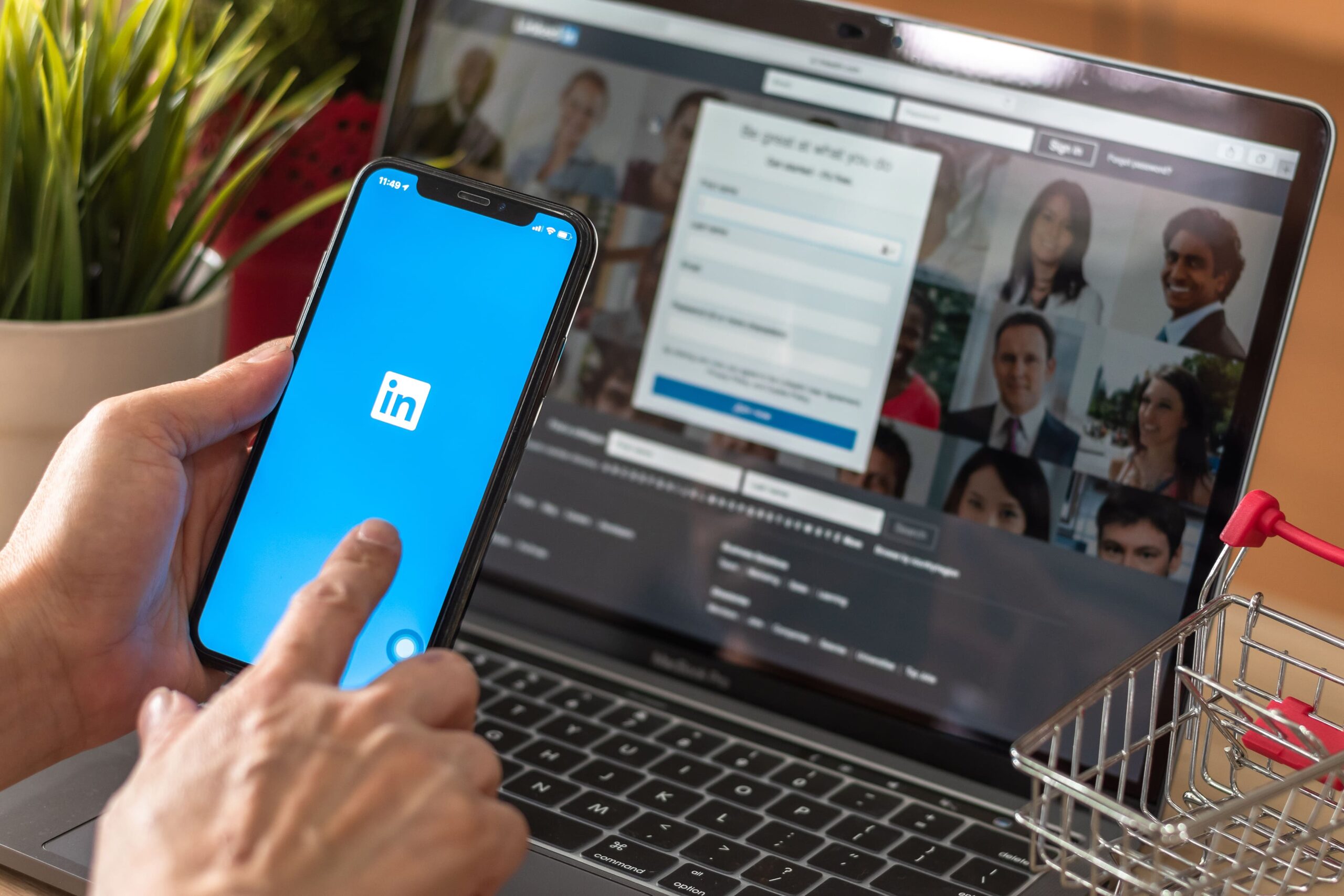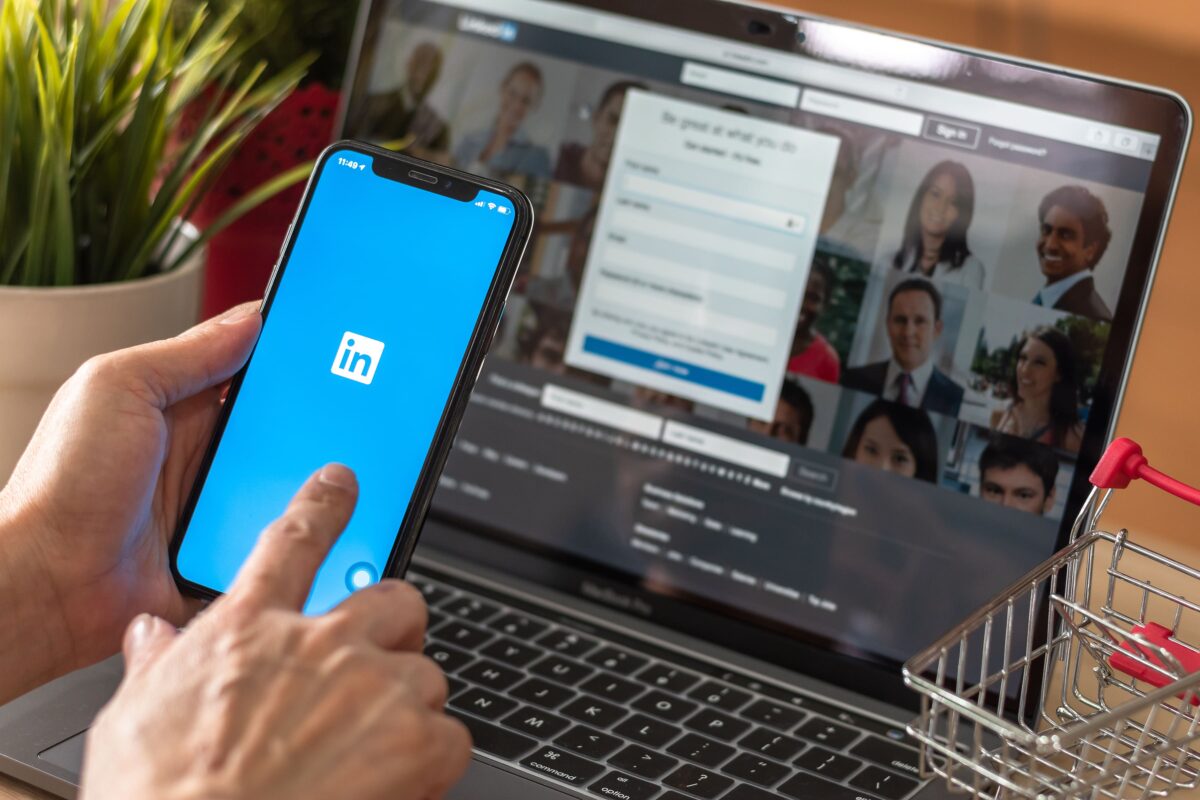You might think that having the most in-demand skills in IT would be enough to propel you to career success. That recruiters would be lining up to prise you away from your current role with enticing and lucrative alternative job offers.
That's true to a degree. But it hinges crucially on whether recruiters find you - and are won over by you - when they search for IT candidates on sites such as LinkedIn. If your profile is buried on the site, rather than jumping out of the relevant search result pages, your career prospects take a serious hit. The same is true if your profile doesn't do a compelling job of winning over recruiters once they've found you.
So think of LinkedIn as a powerful social media platform that you should be leveraging both when you're looking for a career change - and indeed in advance of when you're next looking. In this blog post, we will discuss some tips on how to make the most of LinkedIn when looking to further your IT career.

So What Should an IT Professional Do To Perfect Their LinkedIn Profile?
Profile Picture/Header Image
Starting with the basics, your profile picture and your header image create a powerful first impression when someone initially lands on your profile page. Your profile picture should mirror the type of organization you would like to work in. Working in IT in an investment bank is going to require a more formal photo than if you're looking to work in a casual-dress startup environment. So give this some thought - but either way, take the time to add a professionally shot photo rather than a cropped out picture.
Then we'd recommend doing something with the header image space, rather than just leaving it as the boring default. Some choose to use their header image to display interests or information, such as your contact details or branding from your current employer. Try to make it visually appealing.
Introduction/headline
The introduction (also known as your LinkedIn headline) sits just below your display name and is arguably the most valuable "real estate" you have on LinkedIn. It appears everywhere you do anything on LinkedIn - alongside your comments, posts, group contributions, etc. It also is the most prominent thing people see when you appear in search results or send out a connection request.
Consequently, it should be used to describe who you are/what you do - in a short, punchy manner. There are ‘about you’ and ‘experience’ profile sections that can be used to go into further detail about your background. So think of your headline as being purely to draw in those looking to hire IT professionals.
About you section
The about section of your profile has a word count of 2,600 characters. It comes before the ‘Experience’ section (where you will detail your past roles, like on a resume) and so is your chance to form a positive first impression as people start to read your profile. Some things you might want to include here are:
- The professional experience you most want to draw people’s attention to
- Your academic achievements (otherwise people have to scroll right to the bottom of your profile to see your academics)
- Some personality! Write in a way that is engaging and will make people warm to you. That then sets the tone and makes the reader want to find out more, rather than hitting the back key.
Featured section
The Featured section does exactly what its name implies! It allows you to feature things on your profile. Perhaps you'd like to include a PDF of your resume on your profile? Perhaps you'd like to add a video introduction about yourself or your work? Perhaps you'd like to add a case study or a link to a blog or report you've written. The featured section is where you would do all these things.
You’ll see this section appears prominently on your profile and is also very visual, so used intelligently it can be a great way of drawing attention to the things you'd most want a recruiter to know about you.
Experience
Although the most relevant and important work experience should be included in the about section, this experience section allows you to expand on each of your previous roles so that your job titles, responsibilities and achievements are fully documented and a richer set of keywords incorporated.
Education
Much like the experience section, you will include the most enticing aspects of your education in the about section. However, it is a good idea to include all qualifications you have earned - since any one of them could be something a recruiter is searching for.
Keywords
Whilst not a specific section on your profile, the keywords you use are amongst the most critical of things to get right. LinkedIn search results pages are binary. Your profile either contains a keyword that is being searched for or it doesn't; and that, in turn, means you either appear in search result pages or you don't.
What you can take from this is that saturating the relevant keywords you have on your profile is the single biggest thing you can do to influence your visibility amongst the recruiters you would like to be seen by and ultimately would like to impress.
Try to list all your IT skills, qualifications, job titles - and all the variations that might be used within the industry. Every gap in keywords you leave costs you search appearances - and that cost is replicated every week that you haven't addressed the gaps, quite possibly for the rest of your career.
It's also worth putting yourself in the shoes of the employers who'd be making these hires. What else might they be looking for in their ideal hire besides strong computing skills? Maybe team leadership? Maybe presentation skills? Maybe someone with entrepreneurial flair? The more of these traits and skills you cover off in your profile, the more frequently you're going to appear in searches rather than dropping out of contention.
Contact details
It sounds obvious, but actually LinkedIn doesn't prompt you to revisit your contact details very often. Having your best contact details saved to your profile means people can contact you in ways other than via LinkedIn messages. Some candidates will even publish their contact details on their profile or in their header image, so that these details are visible to more than just their connections.
‘People also viewed’
The ‘people also viewed’ section shows which profiles others have viewed alongside yours. We recommend that you remove this feature from your profile as it could draw attention to other, similar profiles (of competing candidates). The steps to remove this feature are as follows:
- Click the ‘me’ icon at the top of your LinkedIn homepage.
- Click settings & privacy
- Click the account preferences section on the left.
- Click ‘change’ next to ‘viewers of this profile also viewed.'
- Switch the toggle ‘left/right’ to select ‘yes/no’ respectively.
Open to finding a new job
The last setting you may wish to update on your profile is the "Open to finding a new job" setting. This allows you to let others on the LinkedIn platform - EXCLUDING your current employer - know that you are open to a career move. It's particularly powerful because it causes you to appear in more recruiters' searches on LinkedIn - and also is visible to recruiters when you appear in their search results. So where recruiters are narrowing down their candidate searches to only consider candidates who are likely to be open to a career move, this setting is going to mean you leapfrog lots of other similarly qualified candidates.
Making Connections
Last, but by no means least, is the positive impact you can have on your visibility by being better connected on LinkedIn.
It's not something that most people appreciate, but one of the key factors impacting how highly up the search result pages you appear is how well connected you are. LinkedIn tries to show search results that are most likely to be meaningful to the person searching. So greater prominence is given to people who have connections in common with the person doing the searching. Or put another way, the first pages of search results will be populated much more with 1st and 2nd degree connections than with 3rd degree connections.
Given that that is the case, you can obviously choose to strategically grow your LinkedIn network in your location / sector and thereby increase the frequency with which you appear as one of the top search results.
Concluding remarks
We hope you’ve picked up lots of actionable ideas to help you become more visible on LinkedIn and more likely to be found and approached by recruiters there.
A small investment of time today to get these things right will repay you for many years to come. Be sure to connect with one of our recruitment teams by submitting the form below.
The team at Myticas hopes to help you with your next career jump in the IT sector.

